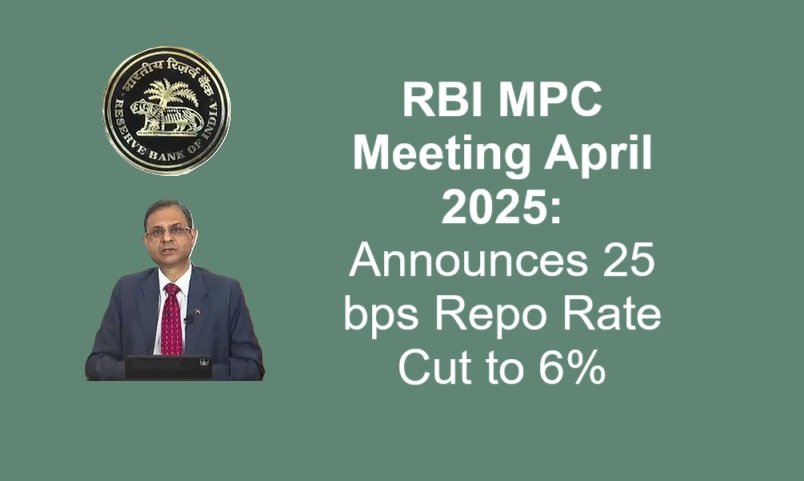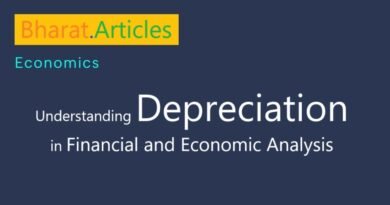
RBI MPC Meeting April 2025: Announces 25 bps Repo Rate Cut to 6%
In his first policy move, RBI Governor Sanjay Malhotra signals pro-growth stance amid global economic headwinds
New Delhi, April 9, 2025 — In a major move aimed at reviving economic momentum, the Reserve Bank of India (RBI) under newly-appointed Governor Sanjay Malhotra has reduced the repo rate by 25 basis points, bringing it down to 6%. This is the second consecutive cut in 2025 and the first major monetary policy decision under Governor Malhotra’s leadership, following the exit of Shaktikanta Das.
The decision, announced at the end of the three-day Monetary Policy Committee (MPC) meeting, was driven by a need to cushion the Indian economy from slowing global demand, rising trade tensions, and the recent imposition of higher import tariffs by the United States.
2025 Turning Into a Dream Year for Borrowers
Home loan borrowers are having an excellent year 2025, which began with a 25 basis point repo rate cut. Now, with another 25 bps reduction announced in April, EMIs on floating-rate home loans are set to fall significantly, offering immediate relief to borrowers as banks begin to adjust their lending rates.
The repo rate now stands at 6%, a level last seen in early 2022. Lenders are expected to transmit the rate cut swiftly, in line with the External Benchmark Lending Rate (EBLR) mechanism.
“With back-to-back rate cuts, the RBI has clearly pivoted towards a growth-first approach,” said a senior economist at a leading private bank. “This will provide a welcome tailwind to retail consumption and housing demand.”
Why Did RBI Cut Rates Again?
Governor Malhotra and the MPC cited moderating inflation, concerns over geopolitical uncertainties, and slowing GDP growth as key drivers behind the move. Here’s a closer look at the rationale:
1. Tame Inflation
Consumer Price Index (CPI)-based inflation has remained well within the central bank’s comfort zone. March 2025 inflation stood at 4.2%, aided by a drop in food and fuel prices.
2. Weakening Growth
India’s GDP expanded at just 5.6% in Q3 FY25, down from 6.3% in the previous quarter. Exports have been sluggish and private investments remain cautious amid global headwinds.
3. Trade Tensions
The recent announcement of 26% import tariffs on Indian goods by the U.S. has created fresh uncertainties around exports and overall trade balance. The RBI is aiming to shield the domestic economy by easing credit conditions.
Policy Highlights: MPC April 2025
- Repo Rate: Reduced from 6.25% to 6.00%
- Reverse Repo Rate: Now at 5.75%
- Standing Deposit Facility (SDF): Fixed at 5.75%
- Bank Rate: Reduced to 6.25%
- Policy Stance: Maintained as ‘Neutral’
The committee emphasized that its stance allows flexibility to adjust policy as new data emerges.
Sanjay Malhotra’s First Major Policy Decision
Sanjay Malhotra, a seasoned bureaucrat and former Finance Secretary, assumed office as RBI Governor earlier this year. His first policy move has been closely watched by both domestic and international observers.
“This rate cut reflects Governor Malhotra’s intent to support growth without compromising inflation management,” said a policy expert at NIPFP. “It sends a strong message to markets that the RBI is responsive and proactive.”
Impact on Loans and Deposits
✅ Home Loans:
Borrowers with floating-rate loans will benefit immediately. For example, a ₹50 lakh loan over 20 years could see monthly EMIs reduced by ₹750–₹850, translating to total savings of ₹2–₹2.5 lakh over the full tenure.
✅ Business and MSME Loans:
Reduced borrowing costs will make working capital and long-term loans more attractive for businesses, particularly in manufacturing and services.
❌ Fixed Deposits:
While loan rates fall, deposit interest rates are likely to come under pressure, disappointing conservative investors relying on fixed income instruments.
Market Response and Outlook
Despite the positive news for borrowers and the broader economy, Indian stock markets reacted cautiously. The Sensex fell 0.58% and the Nifty 50 dipped by 0.72%, largely reflecting ongoing concerns over global market volatility and U.S.-India trade tensions.
Looking ahead, economists believe the central bank has left the door open for one more rate cut in the second half of the year, especially if inflation remains within range and external shocks persist.
Conclusion
The RBI’s latest move under Governor Sanjay Malhotra underscores a clear policy pivot — one that prioritizes domestic growth and seeks to insulate India from global uncertainties. With inflation under control and economic growth needing support, the 25 bps cut is both timely and strategic.
For millions of Indian borrowers, this means more affordable credit, lower EMIs, and improved financial breathing room in the months ahead.






